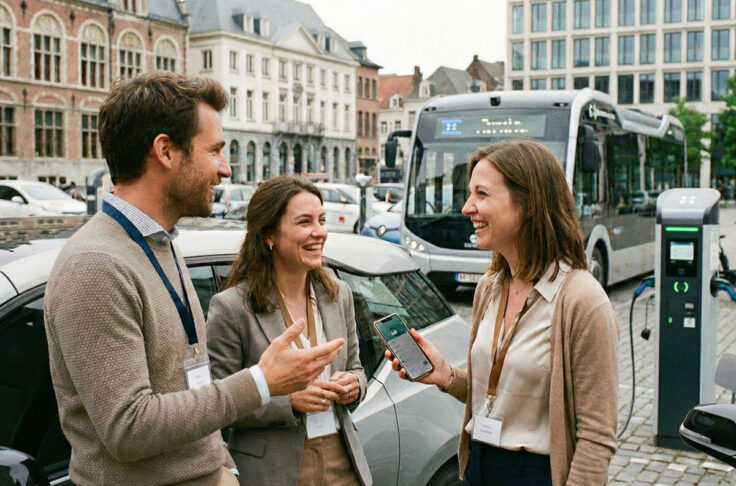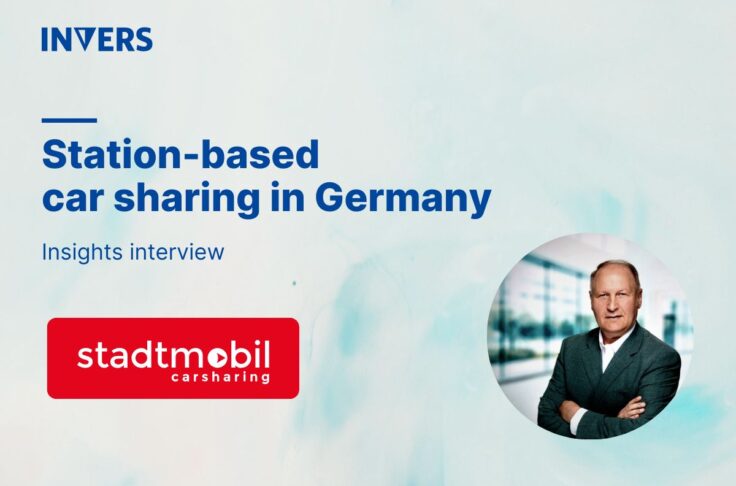How To Make Car Sharing Profitable

Profitability is a key challenge for many car sharing operators. That is what our customers and leads keep telling us. A profitable car sharing business would allow them to scale successfully and provide mobility options to even more people in more regions of the world. That’s why it is so important for them. How can technology help address this challenge?
Table of Contents
Insights from other industries
To start with, it may be useful to look at the evolution of another industry that deals with shared assets as well: Airbnb. Airbnb users rent their flats and houses out to various strangers. In the early days, there were instances of homes being left dirty, or even damaged and vandalized. Subsequently, however, Airbnb has done remarkably well in creating a shared sense of ownership of these assets amongst its users.
They did so by using tools like customer education, public relations, customer ratings, host ratings and various technology elements, like for example easier check-in/checkout or amenity listings. When Airbnb customers check out, they feel it’s in their best interest to make sure they don’t leave the house dirty – they take out the garbage, make the bed, put dishes in the dishwasher, and tidy up the place before they leave. The same users don’t do this when they check out of a hotel. It took time, but by carrot or by stick, Airbnb has fostered a habit of leaving holiday homes tidy.
Car sharing’s case is different from Airbnb’s, where the assets are immovable. Cars move and therefore, creating this joint sense of ownership is more difficult. Thus, we expect this journey to take longer – and as the journey progresses the path to profitability becomes clearer. Technology plays a big role in this carrot and stick approach, but it can pave the way for a profitable car sharing operation.
Profitability in car sharing
Some examples from the car sharing industry show that profitability is already possible today. German car sharing association bcs has just recently pointed out that many car sharing services are economically viable. Six of the ten largest providers report reasonable profits in their published balance sheets. However, there are differences between business models. While station-based operators benefit from a more profitable car sharing business model, operators of free-floating car sharing find it more difficult. Obviously, their product requires high investments, especially in the initial phase. At the same time, their impact on urban mobility is high: In Germany today, free-floating car sharing providers account for roughly half of the car sharing vehicles offered and they are active in eight metropolitan areas.
Profitability has only two drivers – revenues and costs. So, for an operator the key questions are how to increase revenue and how to reduce costs and keep them in check. Increasing revenues can be done by driving utilization, adjusting the pricing strategy, growing demand or getting more customers. Technology and telematics play a role here: Customers are more likely to use the service again if operators deliver a good user experience, ensuring that everything works flawlessly. The main drivers for cost are vehicle downtime, vehicle lifecycle management and other variable costs such as fuel or maintenance costs.

The secret of reducing downtime
Vehicle downtime is when the vehicle is unavailable for customers to use. It has a double impact on the P&L – revenue loss and cost. Because the vehicle is not available to customers, there is an opportunity loss. A customer would look for alternatives if they wanted to use a vehicle but were unable to. Downtime also leads to increased costs. Usually, vehicle downtime requires attention from staff to fix it. This means that manpower costs rise if there is significant downtime.
In some cases, the reported GPS location of the vehicle is not accurate. Operators find this out after customers report that they cannot find a vehicle at the specified location. In this case, someone has to physically look for the vehicle and fix the issue that is causing the GPS inaccuracy. In other cases, the vehicle is unable to report its position and communicate with the central server. When this happens often, the operator is uncertain about the status and location of the vehicle, so they take the vehicle out of service momentarily, making it unavailable to the customer. In both scenarios, downtime leads to increased manpower costs and loss of revenue. A good telematics solution drastically reduces the occurrence of these cases, thereby increasing revenue and reducing manpower costs for the shared mobility operator.
In addition, refueling or charging can be a cause for downtime. Here, it is important to always get the most accurate fuel or charge level from the vehicle. This allows operators to plan their operations efficiently, e.g., to give discounts on vehicles that have low fuel or to incentivize customers to refuel vehicles themselves. Receiving real-time, accurate data from your telematics solution here is critical.
Another aspect of reducing downtime to ensure a profitable car sharing business is operations manpower and staff. A reliable telematics solution is always connected and online, delivers accurate GPS locations and allows for reliable communication to unlock and lock the vehicle. This eliminates the need for an operations person to physically inspect the vehicle, so you reduce the need for operational manpower.
Get the most out of your asset
On a more strategic level, managing vehicles’ lifecycles significantly contributes to the bottom line and, thus, the profitability of the sharing business. It involves buying, operating, and selling cars and includes selecting the right vehicles, negotiating favorable purchase terms, ensuring efficient maintenance, and timing the market perfectly for resale. For this end, car sharing companies want to keep their assets in good condition, not only for customer satisfaction, but also to achieve an optimal resale price. Thus, keeping the cars in good condition and managing their mileage is essential. So are regular maintenance and timely repairs, including regular servicing, and prompt resolution of wear and tear issues. Proactive maintenance helps to identify potential problems early, reducing the likelihood of major breakdowns and ensuring the vehicles’ longevity.
In addition, operators state that damage to and smoking in the car directly impacts profitability. For example, in their 2022 report, Mobility Switzerland pointed out that much of their profitability decrease was due to vehicle damages. Incorporating features like damage detection and smoke detection helps safeguard vehicle condition, as smoking can significantly degrade interiors. Dedicated car sharing telematics solutions that include damage detection can identify damages when they occur and report them back to the operator. The operator is able to take the necessary steps to repair the vehicle, not expose customers to damaged vehicles, and to also attribute the damage to the customer who caused it. All of this helps in reducing the cost of operating a shared mobility fleet. Operators report that they lose up to twenty percent of their revenue due to unreported damages that cannot be attributed to the responsible person. A vehicle free from damage or smoke smells encourages frequent and repeat use and contributes to a higher resale value, benefiting the service provider on their path to profitability.
Keep customer care calls at bay
Finally, costs for customer care have an impact on profitability. If the telematics works reliably, it reduces the number of calls per trip to the support team, and therefore reduces customer care costs. For example, if the telematics can use Bluetooth to lock and unlock the vehicle even when there is no cell connectivity, then the operator’s call center will avoid having to deal with a frustrated customer who can’t start or end their trip. Accurate information on fuel levels is also critical here. Customers do not want to be charged for fuel they did not use. If they feel they have been overcharged, they will angrily call. A good telematics solution prevents this situation.
More than the sum of it’s parts
To sum it up, profitable car sharing has many facets and drivers, when you look at it in detail. Many of them can be optimized by technology that has been specifically designed for this business and industry. Adding their contribution to the bottom line up will make a significant difference to the financial side of the car sharing business. Contact us to learn more about advanced car sharing solutions and how to achieve profitability in your car sharing business.


